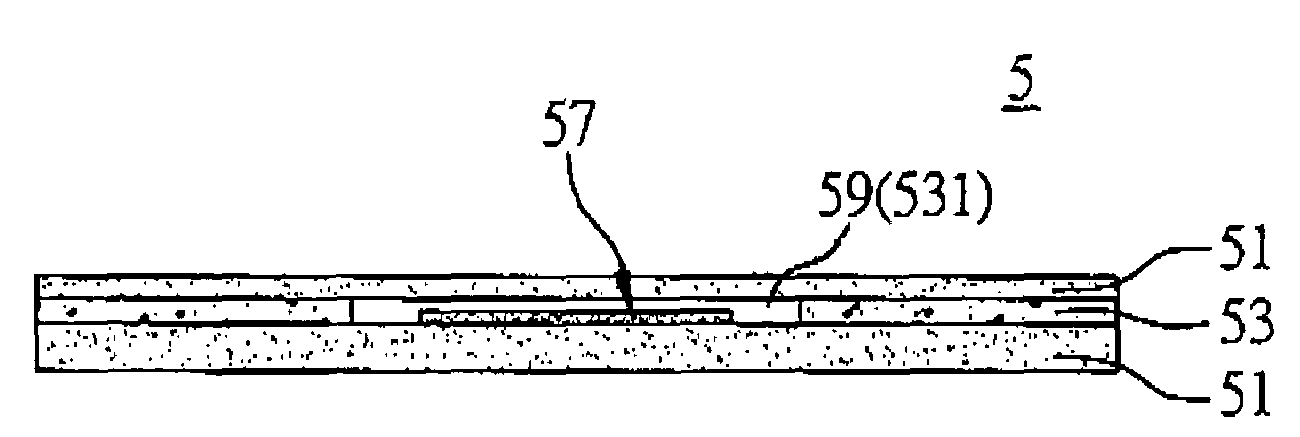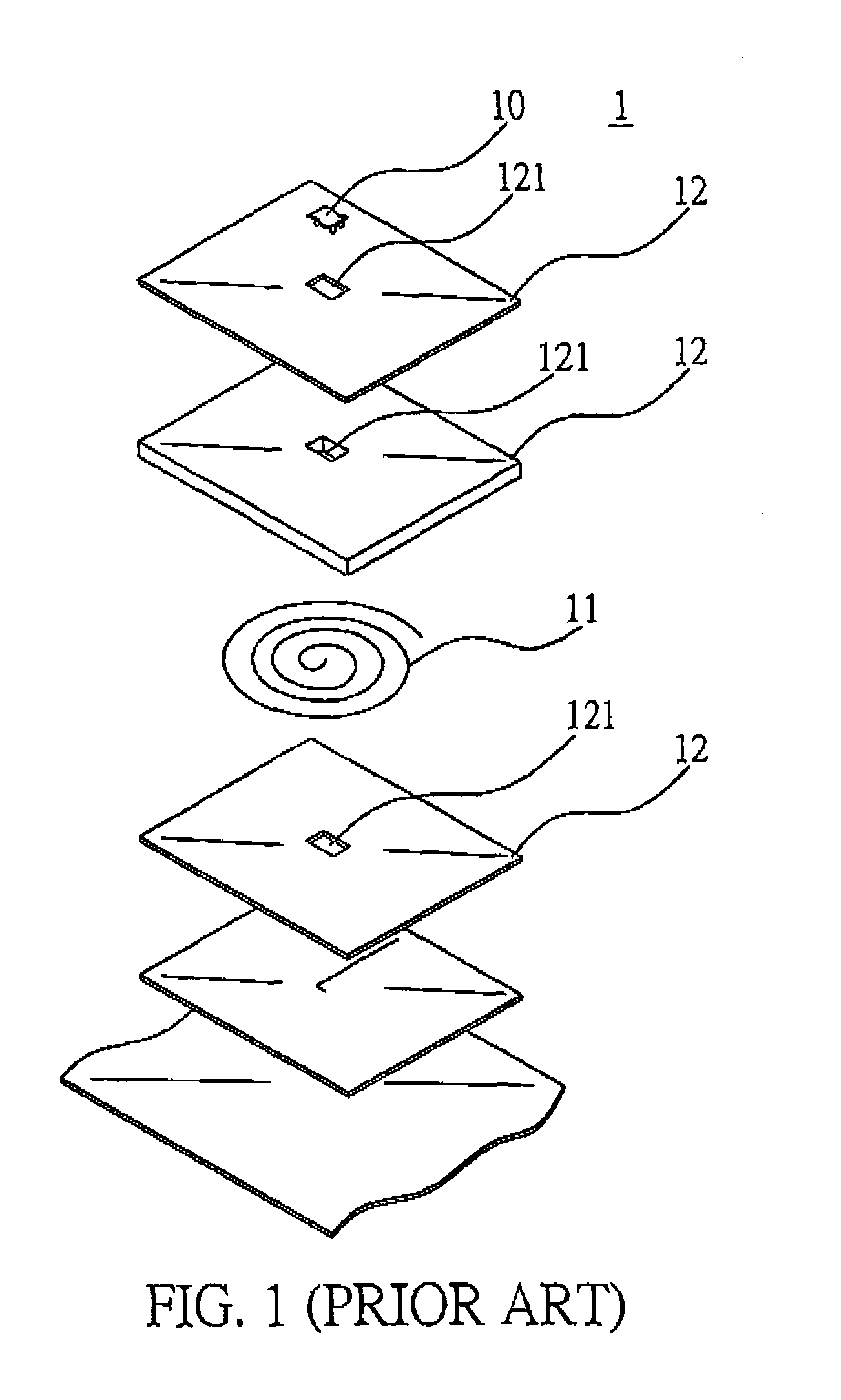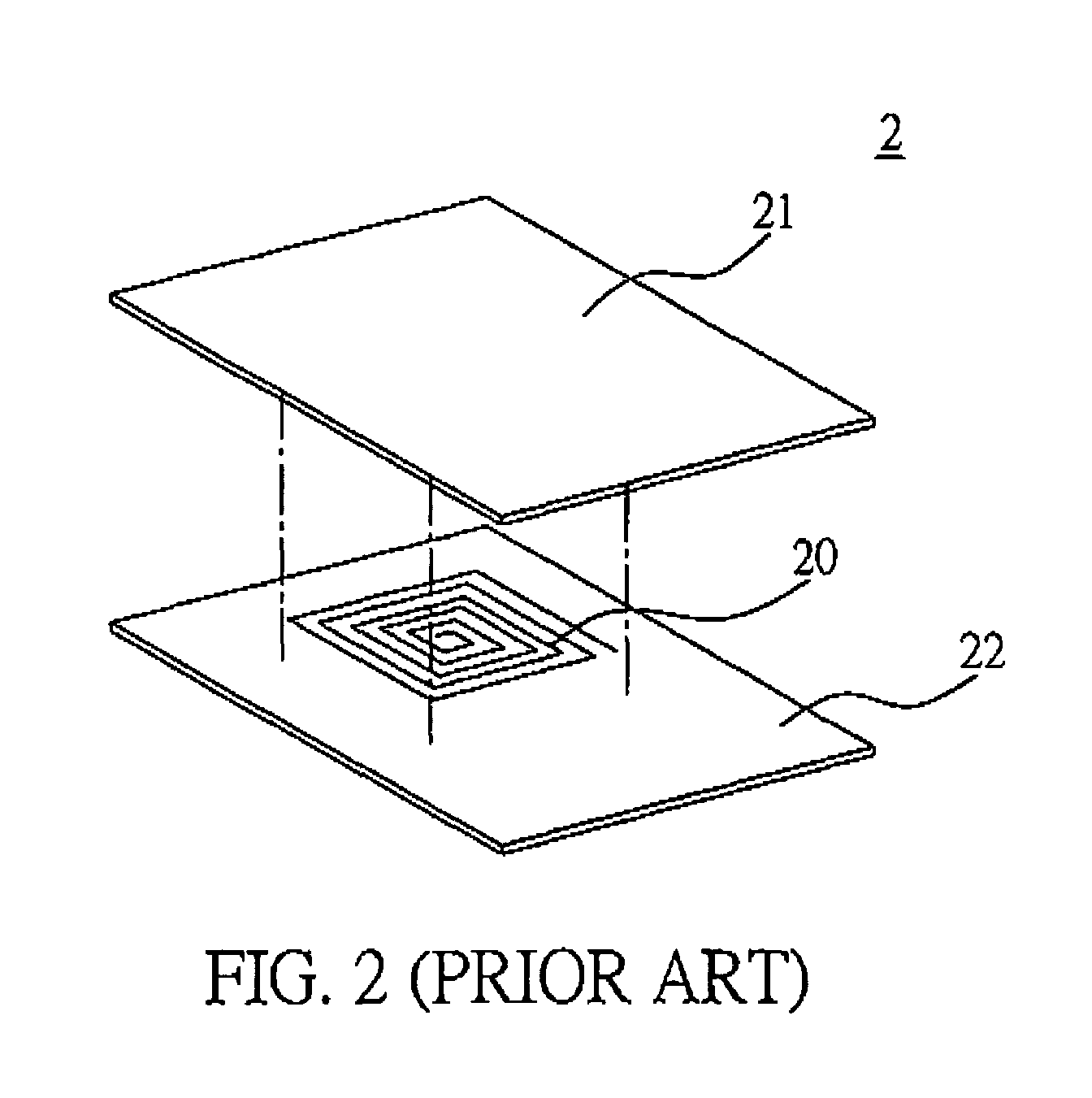Flexible radio frequency identification label and method for fabricating the same
a radio frequency identification and label technology, applied in the field of flexible rfid labels, can solve the problems of inability to effectively apply radio frequency identification labels b>1/b> to objects having an uneven surface, adverse influence of product reliability, and inability to meet the requirements of miniaturization, so as to improve the moisture-proof effect and protect products, prevent oxidation, and increase product reliability
- Summary
- Abstract
- Description
- Claims
- Application Information
AI Technical Summary
Benefits of technology
Problems solved by technology
Method used
Image
Examples
first embodiment
[0029]FIG. 4 is a diagram of a flexible radio frequency identification label according to the first embodiment of the present invention. Referring to FIG. 4, a flexible radio frequency identification label 4 comprises a first flexible protection layer 43, a second flexible protection layer 41, a miniaturized antenna 45 and a radio frequency identification circuit 47. The first flexible protection layer 43 is attached to the second flexible protection layer 41 to form a closed space 49 therebetween. The radio frequency identification circuit 47 is received in the closed space 49. Also, the miniaturized antenna 45 is interposed between the first flexible protection layer 43 and the second flexible protection layer 41 and electrically connected to the radio frequency identification circuit 47.
[0030]The first flexible protection layer 43 and the second flexible protection layer 41 can be flexible substrates having dielectricity, and can be a flat structure made of the same or different ...
second embodiment
[0040]FIG. 5 is a diagram of a flexible radio frequency identification label according to the second embodiment of the present invention. As the present embodiment and the first embodiment only differ in the structural design of the closed space, in order to provide a succinct specification, the symbols of the same elements are remained unchanged and detailed description of the same structure and fabrication are omitted.
[0041]Referring to FIG. 5, a flexible radio frequency identification label 4′ comprises a first flexible protection layer 43, a second flexible protection layer 41, and a radio frequency identification circuit 47. The first flexible protection layer 43 is attached to the second flexible protection layer 41 to form a closed space 49 therebetween. The radio frequency identification circuit 47 is received in the closed space 49. As the miniaturized antenna is extreme small in size and interposed between the first flexible protection layer 43 and the second flexible prot...
third embodiment
[0050]FIG. 6 is a diagram of a flexible radio frequency identification label according to the third embodiment of the present invention. Referring to FIG. 6, a flexible radio frequency identification label 5 comprises two flexible protection layers 51, a middle layer 53 having a hollow portion 531, a miniaturized antenna (not shown in the figure) and a radio frequency identification circuit 57. The two flexible protection layers 51 are attached to the middle layer 53 to form a closed space 59 therebetween. The radio frequency identification circuit 57 is received in the closed space 59. As the miniaturized antenna is extreme small in size and interposed between the two flexible protection layers 51, it is difficult to be labeled and indicated in the figure. It should be noted that its structure is the same as the one in the first embodiment, and it is also electrically connected to the radio frequency identification circuit 57 in the present embodiment.
[0051]The present embodiment m...
PUM
 Login to View More
Login to View More Abstract
Description
Claims
Application Information
 Login to View More
Login to View More - R&D
- Intellectual Property
- Life Sciences
- Materials
- Tech Scout
- Unparalleled Data Quality
- Higher Quality Content
- 60% Fewer Hallucinations
Browse by: Latest US Patents, China's latest patents, Technical Efficacy Thesaurus, Application Domain, Technology Topic, Popular Technical Reports.
© 2025 PatSnap. All rights reserved.Legal|Privacy policy|Modern Slavery Act Transparency Statement|Sitemap|About US| Contact US: help@patsnap.com



